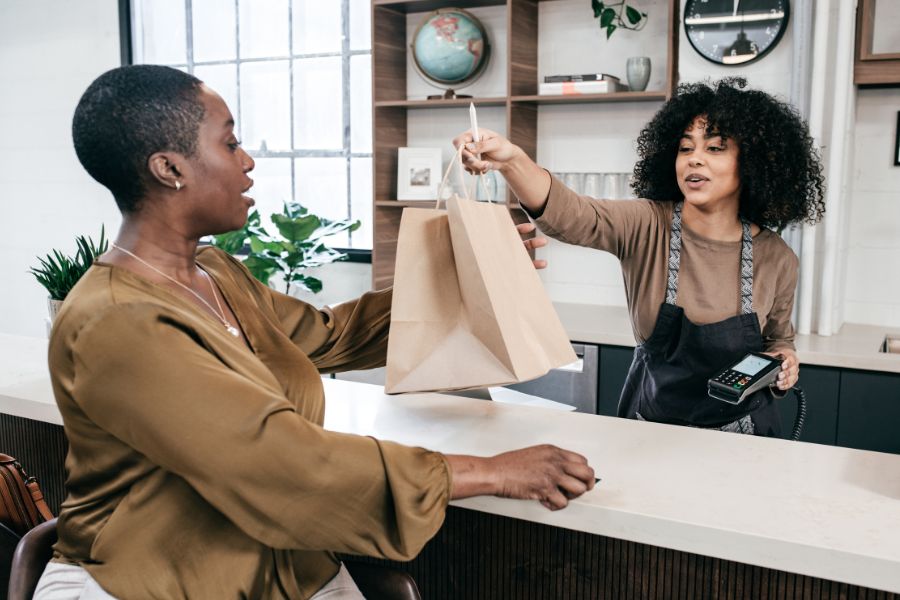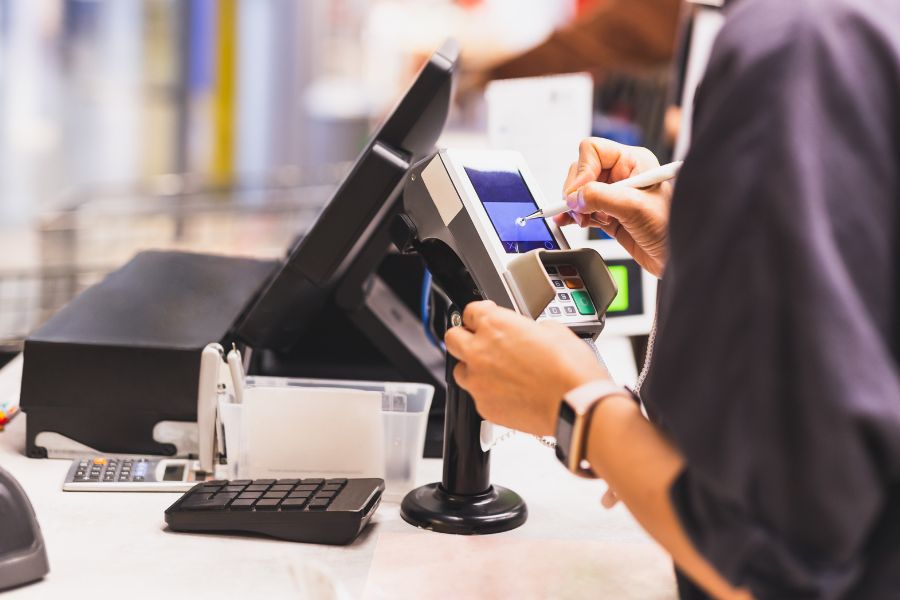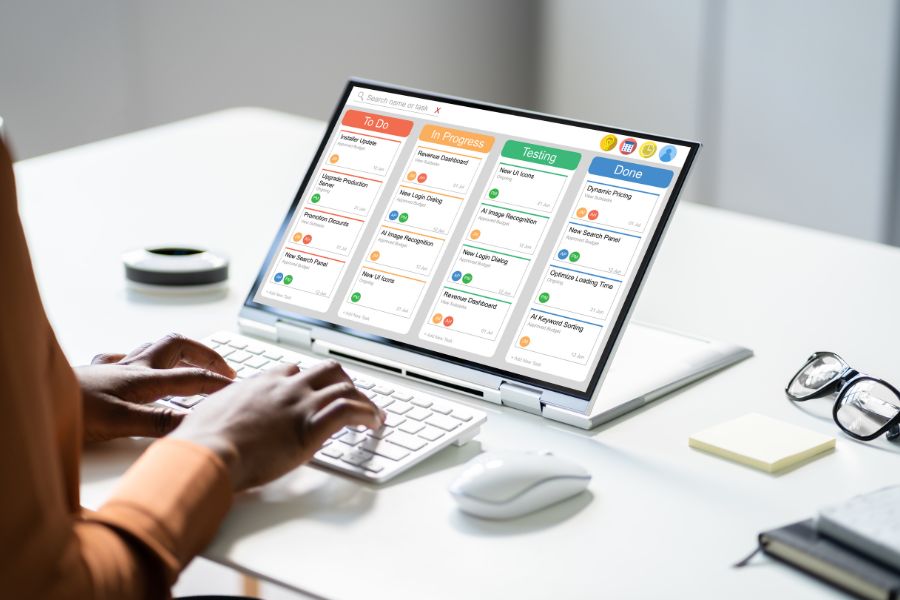After the bruising year of 2022, people look forward to 2023 as a year of rebuilding. And of course, a new year comes with new trends in the retail industry. By monitoring existing trends, merchants can make knowledgeable predictions on what could happen in the next 12 months. The following are the leading outstanding retail trends for retailers to leverage their businesses in 2023.
Customers will be more conscious of their purchase decisions
According to Facebook IQ’s Future of Shopping Report, modern consumers are “becoming more prepared and efficient when shopping in-store”. This means before deciding to visit physical stores for a purchase, they would spend some time researching the products with the help of online resources. That’s why it is important to show up at the research phase of customer journeys.
Businesses should be aware of the websites, channels, social media that their customers are using to research and plan their shopping. For instance, having an online presence on popular social platforms that young shoppers often use such as Facebook, Instagram can remarkably improve your brand awareness. For the elderly, make sure they can find you with print or online ads.
Another interesting fact is that many people have started to pay more attention to environmental problems and aren’t likely to buy products from a not-so-green brand. With this increasing demand to shop ethically, buyers won’t fall for “greenwashing” – a term to describe a brand that spends more time and money marketing themselves as environmentally friendly than trying to minimize their environmental impact.
As we are moving into 2021, the brands have to show how responsible they are as corporate citizens if they want to engage the conscious target audience.
Retailers benefit from the rise of localism
The COVID-19 pandemic has made it a chance for local retail businesses to make a resurgence. YouGov’s research shows that 64% of people tend to support and buy products from local shopping areas. The economic impact of the pandemic has shown the importance of local communities since many have shifted their focus to keep small businesses afloat.
As the research above, two-thirds of shoppers have taken some actions toward supporting local businesses. On Facebook, users’ clicks on searches for local businesses increased by 23% from February to May 2020. Retailers in Europe like Lidl are also working to bring more locally sourced products onto their store shelves.
Another report by Paymentsense reveals that 62% of consumers are likely to stay loyal to the local businesses that continued to work to help them through quarantine. This retail trend will likely continue in 2021 as many people will still work from home. Therefore, local business owners should invest in promotional campaigns within their neighborhoods to attract more customers and boost sales.
Loyalty marketing is becoming more competitive
One of the 203 3retail trends is that loyalty marketing will become more competitive than ever before. Nowadays, shoppers aren’t afraid to try new things, and this trend will possibly grow stronger in the future as new brands enter the market. This indicates that brands need to work harder on developing several loyalty programs to keep their current customers engaged and not switch to other ones.
One of the best ways to do this is to dig into the information and insights you have about your clients, for example: What types of shoppers they are, What channels they are using, etc. The next step is to group shoppers based on their profiles and buying behaviors, then customize your messages and campaigns accordingly. Businesses can then determine their top customers, who are gradually slipping away, and who needs to be re-engaged with a special offer or promotion.
With these data, merchants can offer a suitable loyalty program for each customer group among many different ones such as points-based programs, tier-based programs, gift cards, mission-driven programs, etc. For example, Walgreens has a points program called Balance Rewards. This allows customers to redeem points to exchange for savings on purchases. Consumers will unlock additional savings via coupons or special sales as they continue to buy. The benefit of this program is that it helps collect customer data from each purchase so that Walgreens can personalize their products and services to customer’s needs.
Live selling is the latest retail trend
Live selling is among the latest retail trends to follow in 2023 as consumers are becoming more receptive to shopping via livestreams. This is the closest way for retailers and brands to connect with their buyers during the pandemic physically. Also, sales from live selling are expected to double globally to $120 billion in 2021. Combining this with current low footfalls in public could accelerate the popularity of live video shopping soon. So why don’t you get ahead now and realize the benefits?
Hosting a live broadcast can be quite easy since it doesn’t require much production equipment or many-step processes. Set-ups can be simply a smartphone for recording, and one or two laptops running a video editing platform in the cloud. Producers can set up live streams on Facebook (or Instagram) Live to make live selling more accessible and convenient within only a few clicks.
A good example of this is Estee Lauder. In the first quarter alone, this cosmetics brand hosted more than 1 million virtual try-on sessions globally with consumers watching for more than 30 minutes on average in a session. This presents an opportunity for brands to bring back the TV shopping experience more directly and personally.
Creative content takes center stage
Compelling content is and will continue to take center stage in 2021. Today’s consumers tend to explore new brands and won’t hesitate to switch if they found a better one to trust. Therefore, the best thing you can do is to keep them engaged with valuable and relevant content pieces.
You can start by knowing who you are targeting. Be aware of the languages and communication styles that your audience favors. Also, it is essential to know what platforms and media to convey your messages. Videos seem to go strong, especially among young consumers. Knowing your shoppers’ pain points, desires, and stuff they can relate to will help you craft your content marketing strategy.
When it comes to a strong content plan, the cosmetics brand Lush surely knows how to make the best of it. Lush puts their customer’s product snaps right in front and center on Instagram as a peer-to-peer recommendation for potential shoppers. Doing this inspires more customers to share their pics and create a viral marketing effect.
Advanced technology continues to reshape the retail industry
2021 would be a year worth waiting for with the help from key retail trends in technology. Adobe data shows that during this year’s Black Friday, mobile shoppers spent $3.6 billion representing 40% of total online spend. In response, businesses are starting to streamline the mobile shopping experience by using QR codes. These codes will provide customers with scan-based access to digital promotional resources. Merchants can then create instant and contactless shopping interactions through multiple channels. Several retailers like Circle K have started to offer the convenience of a QR code-based shopping experience at the fuel pump.
Other innovative ideas such as self-driving delivery vehicles and drone delivery have come to life. Switching to online purchases and deliveries helps reduce the risks of human interaction. Autonomous delivery is quick and contactless, which is what everyone wants in the COVID-19 era.
As technology continues to advance in 2021, the savviest retailers have to use the technology to improve their shopping experience and blend in with their customer journeys.
Social commerce is on the rise
Social commerce will be undeniably the breakout retail trend for 2021. Shopping experiences on a social media platform or social commerce offer consumers a more seamless way to shop online. Users can purchase from the social media app instead of clicking through a third-party website. Technavio recently forecasted that the social commerce market will be worth $2051.49 billion by 2024.
Instagram and Facebook have customized storefronts for businesses. Sellers can then create collections of featured products and personalize their shop with banners, images, and colors. Since Instagram is integrated with Facebook, once your store is set up, it can reach a broader audience on both platforms.
On a final note
2021 will be another year of major changes in the world of retail and e-commerce. With the increasing demands and a prudent customer base, things are sure to get tough. As we are towards the end of 2020, businesses should have a deeper look at the data, retail trends, and customer behaviors to prepare for the unexpected in the future. Want more insightful thoughts? Visit our blog now!
ConnectPOS is a all-in-one point of sale solution tailored to meet your eCommerce POS needs, streamline business operations, boost sales, and enhance customer experience in diverse industries. We offer custom POS with features, pricing, and plans to suit your unique business requirements.




